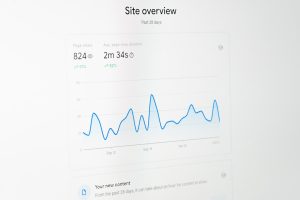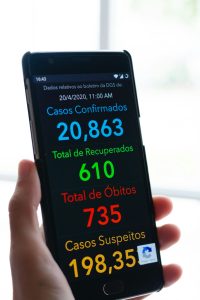
In 2025, building a website doesn’t require a team of developers. You don’t even need to know how to code. With no-code landing page builders, anyone—from marketers to small business owners—can now create stunning and effective landing pages in minutes.
If you’ve got a message to share or a product to sell, a landing page is your digital storefront. But creating one shouldn’t feel like rocket science. That’s where these no-code tools shine. They’re fast, intuitive, and they actually make page design fun.
Why No-Code Landing Page Builders?
Here’s what you get with no-code tools:
- Drag-and-drop simplicity
- No tech headaches
- Mobile-friendly layouts
- Speed—build a page in under an hour!
Let’s take a look at the best options out there this year. Whether you’re launching a product, growing a newsletter, or capturing leads, these landing page builders have your back.
1. Carrd – Simple. Fast. Beautiful.
Carrd is one of the easiest tools out there. It’s perfect for simple one-page sites. And it’s shockingly powerful for how affordable it is.
Best for: Personal websites, portfolios, and contact pages.
- Super light and fast
- Lots of beautiful templates
- Ideal for single-page designs
- Free option available

Downsides? It’s not built for complex funnels or dynamic features. But for clean and stylish pages? Carrd is a winner.
2. Webflow – Design Like a Pro, No Code Required
Webflow is like having Photoshop, WordPress, and a CMS in one. It’s powerful and lets you build almost anything visually.
Best for: Startups, design-focused brands, and custom product pages.
- Total design control
- Responsive by default
- CMS and e-commerce features
- Incredible animations and interactions
What’s the catch? It has a learning curve. If you’re a complete beginner, it may take some time to get comfy.
3. Leadpages – Built for Conversions
Leadpages puts a strong focus on marketing. It’s made for businesses that want results—think leads, clicks, and sales.
Best for: Marketers, agencies, and anyone running ad campaigns.
- Built-in A/B testing
- Conversion-optimized templates
- Integrates with almost every marketing tool
- Host pages on your own domain
It’s not as flashy in the design department, but its goal is clear: turn visitors into customers.

4. Framer – The Designer’s Playground
Framer brings incredible polish to no-code design. It’s how designers impress without touching a line of code.
Best for: Creative portfolios, startups that prioritize branding, and landing pages with flair.
- Real-time collaboration
- Freeform layout freedom
- Tons of modern templates
- Great support for animations
Small tip: Use Framer when polish matters. It makes your brand look premium.
5. Unbounce – Heavyweight for Paid Marketing
Unbounce has been around for a while—and for a reason. It’s a favorite among digital marketers that rely on paid ads.
Best for: PPC campaigns, SaaS products, and performance-driven teams.
- Smart traffic AI (seriously cool!)
- Conversion tools built-in
- Lots of pre-tested landing page layouts
- Forms, popups, sticky bars
Its plans are a bit pricey compared to newer builders, but it’s worth it if conversions matter most.
6. Swipe Pages – Built for Mobile, Fast as Lightning
Swipe Pages creates AMP (Accelerated Mobile Pages), meaning your pages load at light speed—even on slow connections.
Best for: Mobile-first campaigns and advertisers that care about speed.
- AMP technology support
- Amazing mobile responsiveness
- Drag-and-drop builder
- Integrated form and payment options
Want snappy pages that shine on smartphones? Swipe Pages is your tool.
7. Tilda – Aesthetic Meets Function
Tilda is a content-focused builder that blends beauty and business. It’s perfect for editorial-style projects and storytelling.
Best for: Designers, bloggers, and content creators.
- Modular block system
- Typography-focused templates
- Built-in integrations for forms and email
- You can even export to code!
Tilda helps your content breathe. It’s not just a builder—it’s a publisher’s best friend.

8. Softr – Turn Airtable into Web Apps
Softr is kind of magic. It lets you create landing pages and functional apps using Airtable as your database.
Best for: Directories, client portals, and data-driven pages.
- Uses Airtable or Google Sheets as a backend
- User authentication features
- Great for MVPs and SaaS tools
- Modern, clean templates
It’s not your classic landing page builder, but it shines when you need more than just a static page.
What Should You Look for in a Landing Page Builder?
Here’s a quick checklist to help you choose the right tool:
- Simplicity: Can you use it without reading a manual?
- Speed: Are you launching campaigns quickly?
- Design: Does it look good enough to impress?
- Functionality: Can you add forms, popups, and integrations?
- Mobile-friendliness: Will it look great on all devices?
The best landing page builder is the one that fits your workflow, not the other way around.
Trends to Watch in 2025
So what’s changing in the no-code world this year?
- AI-assisted design: Smart tools now help you create better layouts in seconds.
- Voice and video integrations: Expect more motion and interactivity.
- Personalization: Pages that change based on user behavior.
- Instant publishing: Launch directly from the editor to the web—no wait time.
These trends are making landing pages more engaging, more creative, and more effective.
Final Thoughts
No-code builders are not just a trend. They are the future of web design. Whether you’re a side hustler, a business owner, or a marketing manager, you can now launch with confidence—and without a developer.
Just pick the builder that feels right, drag-and-drop your way to glory, and hit publish.
The internet is yours. Go build something awesome.






